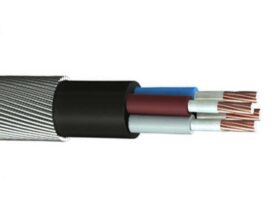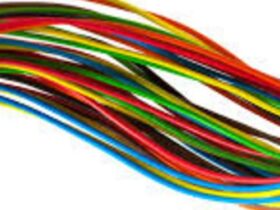Control and instrumentation cables often have electromagnetic shielding to protect against electromagnetic interference (EMI). Here are the main reasons why shielding is incorporated into these cables:
- Prevention of Signal Distortion: Control and instrumentation cables carry low-power electrical signals that are susceptible to external electromagnetic fields. Without proper shielding, these cables can pick up unwanted electromagnetic interference, leading to signal distortion. Shielding helps to minimize the impact of external electromagnetic fields, ensuring the integrity and accuracy of the transmitted signals.
- EMI Mitigation: In industrial environments, control and instrumentation cables are exposed to various sources of electrical noise, such as power cables, motors, switches, and radio frequency (RF) devices. Electromagnetic shielding acts as a barrier, preventing external electromagnetic fields from penetrating the cable and interfering with the delicate control signals. This shielding helps maintain signal quality and reduces the risk of erroneous control actions or inaccurate instrument readings.
- Signal Integrity: Control systems and instrumentation often require precise and reliable communication. Electromagnetic interference can introduce noise or distort the signals, leading to errors or malfunctions in control processes or inaccurate measurements. Shielding minimizes the impact of EMI, ensuring that the transmitted signals remain clean and free from interference, thereby maintaining signal integrity and system performance.
- Compliance with Regulatory Standards: In some industries, control and instrumentation systems must comply with specific electromagnetic compatibility (EMC) standards and regulations. These standards set limits for electromagnetic emissions and susceptibility to interference. The incorporation of shielding in control and instrumentation cables helps ensure compliance with these standards, providing electromagnetic compatibility and reducing the risk of electromagnetic disturbances in sensitive equipment and systems.
It’s important to note that shielding alone may not eliminate all sources of electromagnetic interference. Proper grounding and installation practices are also essential for effective shielding. Additionally, the level of shielding required may vary depending on the application, environmental conditions, and the sensitivity of the control or instrumentation signals.
In summary, electromagnetic shielding in control and instrumentation cables serves to prevent signal distortion, mitigate electromagnetic interference, maintain signal integrity, and comply with regulatory standards. Shielding plays a crucial role in ensuring reliable and accurate control and measurement in various industrial and instrumentation applications.











Leave a Reply